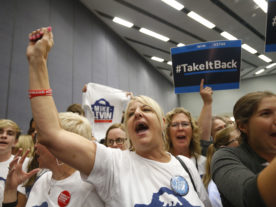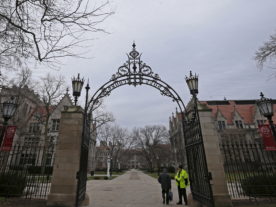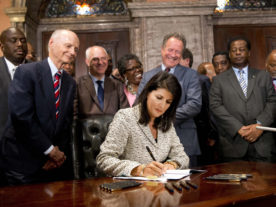In the United States, people in South Carolina and Connecticut are the most satisfied when it comes to having supportive relationships and love in their lives, while those living in Delaware and Texas have the greatest sense of purpose in that they like what they do and are motivated to achieve their goals.
 Those are among the findings of the latest annual Gallup and Healthways Well-being Index, which also found that, collectively, folks in Alaska and North Dakota feel better about their finances than the rest of Americans.
Those are among the findings of the latest annual Gallup and Healthways Well-being Index, which also found that, collectively, folks in Alaska and North Dakota feel better about their finances than the rest of Americans.
And it’s not a huge surprise that people who live in the scenic western state of Montana (first place), or in balmy Hawaii (second place), rank highest in well-being when asked if they like where they live, feel safe there, and have pride in their community.
Hawaii also tops the list when it comes to physical well-being — feeling healthy and having the energy to get things done.
In fact, this year Hawaii residents claimed the top spot for overall well-being, beating out all of the other states in the nation. It’s the fifth time in seven years the Aloha State has topped the list. Gallup and Healthways began tracking U.S. well-being in 2008.
“The rankings provide built-in best practices and so you can look at those elite well-being states, the states that are way up there year after year, and look and see what they’re doing,” said Dan Witters, research director of the Gallup-Healthways Well-Being Index. “Look at the culture there, look at what the leadership is doing there and use that as an example to emulate.”
Alaska, Colorado, Montana and Wyoming round out the top five. In fact, a number of Western mountain states ranked highly in overall well-being. People in those states report a high degree of satisfaction with where they live, feeling safe and having pride in their community. Well-being, Witters said, is regional.
“Community well-being sets the Western states apart,” he said. “And the other one that I would call out is financial well-being, and that’s not sheer income, so much as living within your means, managing your wealth effectively in order to build financial security.”
The news is much more distressing in West Virginia, which ranked lowest overall when it comes to physical health, social relationships, having a sense of purpose, being happy with where you live and having pride in your community. The Appalachian state also ranked low in financial well-being. It’s the seventh year in a row West Virginia has found itself at the bottom of the index.

Huntington, West Virginia (Photo by Flickr user Nicholas Eckhart via Creative Commons license)
“West Virginia doesn’t have the kind of significant, robust, well-being initiative or support from government officials that we might find in other states,” Witters said. “They don’t take very good care of themselves…obesity is very high, smoking rates are the second-highest in the nation…exercise rates are the second lowest in the nation.”
Other states with low well-being overall include Kentucky, Oklahoma, Ohio and Indiana.
The report finds some improvement nationwide on a number of issues and behaviors related to well-being, including a decline in smoking and in the uninsured rate, as well as an increase in reported exercise. Food insecurity, not having enough money to buy food at least once in the past year, dropped to a seven-year low.
Another bright spot is the state of Alabama, which usually finds itself in the bottom 10, but this year jumped to 28. Self-reported attachment to, and pride in, their community, as well as their social relationships, showed improvement in Alabama.
“They had real, authentic improvement,” Witters said. “Now the question is, ‘Is this something that’s kind of a 1-year blip or is this something that’s going to be sustained over time?’ and that’s not something we’ll be able to answer until a year or two down the road and see if they can kind-of hold these gains.”
On the downside, the report found obesity in the U.S. reached a new high mark last year. The survey cast doubt on the likelihood of seeing improvement in that area soon, since half of all overweight adults report they are not seriously trying to lose weight.






















